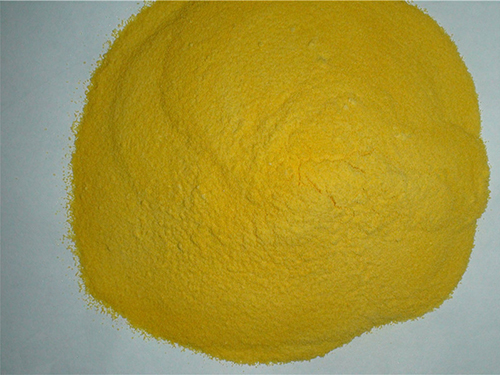hedp phosphonate
The Significance of HEDP Phosphonate in Modern Applications
In the realm of chemistry and industrial applications, phosphonates have emerged as vital compounds, and among them, hydroxyethylidene diphosphonic acid (HEDP) stands out due to its versatile properties and applications. HEDP, often referred to as HEDP phosphonate, is a widely used chelating agent primarily known for its ability to bind metal ions. This article explores the significance of HEDP phosphonate in various sectors, including water treatment, pharmaceuticals, and agriculture, highlighting its benefits and future prospects.
Understanding HEDP Phosphonate
HEDP is a member of the diphosphonic acid family and contains both a hydroxyl group and two phosphonic acid groups. This unique structure endows HEDP with chelating properties, allowing it to effectively interact with divalent metal ions such as calcium (Ca²⁺) and magnesium (Mg²⁺). The ability to form stable complexes with these ions is crucial in many industrial processes, particularly in water treatment and scale prevention.
HEDP in Water Treatment
One of the most prominent applications of HEDP phosphonate is in the field of water treatment. Water hardness, a common issue in industrial settings, is primarily caused by the presence of calcium and magnesium ions. These ions can form scale deposits on equipment such as boilers and heat exchangers, leading to decreased efficiency and potential damage. HEDP acts as a scale inhibitor by chelating these ions, preventing them from precipitating and forming hard deposits.
Moreover, HEDP's effectiveness is not limited to hardness control; it also plays a crucial role in corrosion inhibition. The compound forms a protective film on metal surfaces, reducing corrosion rates and prolonging the lifespan of equipment. Because of these properties, HEDP is widely used in industrial water treatment formulations, making it an essential chemical for maintaining efficient and safe operations in manufacturing and power generation facilities.
Pharmaceutical Applications
Beyond its industrial significance, HEDP phosphonate is making strides in the pharmaceutical sector. Its chelating properties have fostered interest in its potential to deliver drugs more effectively. Researchers are investigating the use of HEDP as a carrier molecule for various medications, particularly for those that require targeted delivery.
hedp phosphonate

Additionally, HEDP has demonstrated potential in oncology, specifically in the treatment of bone metastases. The compound exhibits a unique affinity for bone tissue, facilitating the targeted delivery of radiopharmaceuticals. This targeted approach minimizes systemic exposure and enhances therapeutic efficacy, making HEDP a compound of interest in developing advanced cancer treatments.
Agricultural Uses
The agricultural sector also benefits from HEDP phosphonate, where it is utilized as a fertilizer additive and a growth enhancer. In this context, HEDP serves to improve the availability of essential minerals in the soil by chelating metal ions. This enhanced availability can promote better plant growth and yield, particularly in regions where soil quality is suboptimal.
Furthermore, HEDP's role as a biostimulant has garnered attention. Studies indicate that HEDP can enhance root development and improve the overall health of crops. By optimizing nutrient availability, HEDP contributes to more sustainable agricultural practices, aligning with the global push towards sustainable food production.
Future Prospects
Looking ahead, the importance of HEDP phosphonate is anticipated to grow. As industries increasingly prioritize sustainability and efficiency, the demand for effective chelating agents will likely rise. Ongoing research may unveil new applications for HEDP, particularly in emerging technologies such as nanotechnology and advanced materials.
The environmental impact of industrial processes is another driving factor for the continued utilization of HEDP. As more companies strive to meet regulatory standards and reduce their ecological footprint, HEDP's role in preventing scale and corrosion will be essential.
Conclusion
HEDP phosphonate represents a multifaceted compound with significant implications across various sectors, from industrial water treatment to pharmaceuticals and agriculture. Its unique properties make it an invaluable resource for enhancing efficiency, promoting sustainability, and improving health outcomes. As research continues to uncover new applications, HEDP phosphonate is poised to play a central role in meeting the challenges of modern society.
-
2 Phosphonobutane 1,2,4 Tricarboxylic Acid (PBTCA): Superior Scale & Corrosion InhibitorNewsAug.31,2025
-
Dodecyldimethylbenzylammonium Chloride: High-Purity DisinfectantNewsAug.30,2025
-
2-Phosphonobutane-1,2,4-Tricarboxylic Acid: Scale & CorrosionNewsAug.29,2025
-
Premium Isothiazolinones | Broad-Spectrum Biocidal SolutionsNewsAug.28,2025
-
LK-319 Special Scale And Corrosion Inhibitor For Steel Plants: Advanced Solutions for Industrial Water SystemsNewsAug.22,2025
-
Flocculant Water Treatment: Essential Chemical Solutions for Purification ProcessesNewsAug.22,2025





